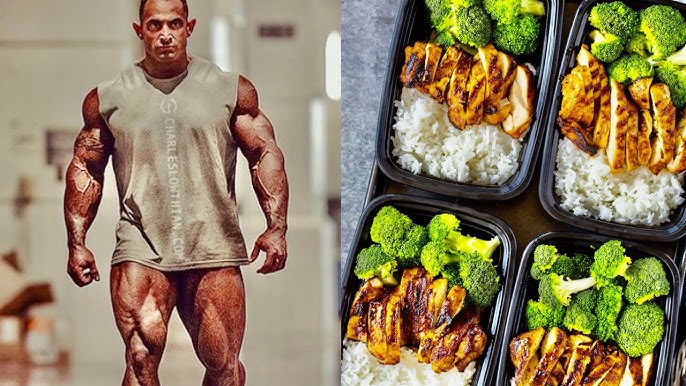Macronutrient Mastery for Bodybuilders
If you’re trying to build a lean, muscular physique that performs as good as it looks, your macros need to be more than just numbers on an app—they need to be intentional. Sure, calories matter for the big picture. But how you break down those calories into protein, carbs, and fats? That’s where real transformation happens.
This article walks you through a no-fluff approach to macronutrients for bodybuilders—whether you’re bulking, cutting, or trying to do the impossible: gain muscle and lose fat at the same time.
What Are Macronutrients (And Why Should You Actually Care)?
Here’s the deal: there are three macronutrients that make up the food you eat. Each one does something very different inside your body:
- Protein – Repairs and builds muscle, supports hormones, enzymes, and immune health
- Carbohydrates – Fuels your workouts, replenishes glycogen, supports recovery and brain function
- Fats – Helps regulate hormones (like testosterone), cushions joints, supports your brain and energy levels
How you balance these macros can seriously influence your body composition, performance, and even your mood and recovery.
Protein: Your Muscle-Building Foundation
If you’re lifting hard but not getting in enough protein, you’re leaving gains on the table. It’s not just about grams per day—it’s also about timing, distribution, and quality.
Smart Intake Targets:
- 1.6–2.2 grams per kg of body weight is ideal for most lifters
- Up to 2.4 g/kg during aggressive cutting or prep
- Space it out across 4–6 meals, aiming for ~0.4 g/kg per meal to maximize muscle protein synthesis (MPS)
Top Protein Picks (based on digestibility and amino acid profile):
- Whey Isolate – Fast-digesting, rich in leucine
- Whole Eggs – Complete source with healthy fats
- Chicken Breast – Lean, high bioavailability
- Lean Beef – Packed with B12, iron, and natural creatine
- Soy Isolate – Best plant-based alternative
To optimize muscle growth, aim for 2.5g of leucine per meal.
Carbs: Fuel for the Work You’re Actually Doing
Carbs are not your enemy—they’re your ally in recovery, training intensity, and anabolic signaling. They’re especially important for natural lifters who rely on every hormonal edge they can get.
Why Carbs Matter:
- Replenish glycogen stores in your muscles and liver
- Reduce post-training cortisol
- Improve endurance and high-rep performance
- Trigger insulin, which helps shuttle nutrients (like amino acids) into muscles
General Carb Guidelines:
| Goal | Grams per kg | What to Know |
|---|---|---|
| Bulking | 4–6 g/kg | Maximize strength + size |
| Cutting | 2–3 g/kg | Keep intensity, time them wisely |
| Recomp | 3–4 g/kg | Prioritize peri-workout intake |
Research (Ivy et al., 2002) shows that high-GI carbs post-workout can increase glycogen replenishment by 50% compared to lower GI sources.
Fats: Your Hormonal Safety Net
Don’t fall into the trap of dropping fat too low during a cut. Your body needs fats to maintain hormonal balance, especially testosterone.
Recommended Intake:
- 0.8–1.0 g/kg body weight for most lifters
- No lower than 0.6 g/kg even in contest prep
Best Fat Sources:
- Monounsaturated fats: avocado, olive oil, macadamia nuts
- Omega-3s: fatty fish, fish oil supplements
- Saturated fats: whole eggs, grass-fed beef (in moderation)
Avoid: Industrial seed oils high in omega-6 (corn, soybean oil)
Studies like Volek et al. (1997) and Hamalainen et al. (1983) found low-fat diets can tank testosterone levels in male athletes.
Macro Breakdown by Goal
Here’s how you might structure macros for a 90kg (198 lb) male:
| Goal | Protein | Carbs | Fats | Daily Calories |
| Bulking | 30% | 50% | 20% | 3200–3800 |
| Cutting | 40% | 30% | 30% | 2300–2700 |
| Recomp | 35% | 40% | 25% | 2800–3200 |
Example (3,000 kcal target):
- Bulking: 225g protein, 375g carbs, 67g fat
- Cutting: 300g protein, 225g carbs, 100g fat
- Recomp: 262g protein, 300g carbs, 83g fat
Check progress every 2–3 weeks. Adjust based on strength, physique, recovery, and appetite.
Advanced Macro Tactics (for Intermediate to Advanced Lifters)
| Strategy | Best Use Case | How It Works |
| Carb Cycling | Cutting w/ strength retention | High/low carb days matched to training splits |
| Fat Cycling | Recomp or long cuts | Periodic fat reintroduction for hormone balance |
| Refeed Days | Mood, metabolism, leptin reset | One high-carb day per week in deficit |
| Pre-Bed Protein | Overnight muscle preservation | Use casein, cottage cheese, Greek yogurt |
These techniques work best when your baseline diet is already dialed in.
Sample Macro Setup (90kg Male, Bulking Example)
- Protein: 200g — chicken, whey, egg whites
- Carbs: 450g — oats, rice, fruit, honey
- Fats: 90g — olive oil, salmon, nuts
- Total Calories: ~3,400 kcal/day
Final Thought
Nailing your macros isn’t just about hitting your numbers—it’s about applying them strategically to drive your training, fuel your recovery, and keep your body in a hormonally healthy state.
Smart macro planning will help you stay leaner in a bulk, hang on to muscle in a cut, and perform like a savage in the gym.
Don’t just count your macros—use them like a pro.
References
- Morton et al., 2018
- Phillips et al., 2017
- Jäger et al., 2017
- Ivy et al., 2002
- Volek et al., 1997
- Hamalainen et al., 1983




